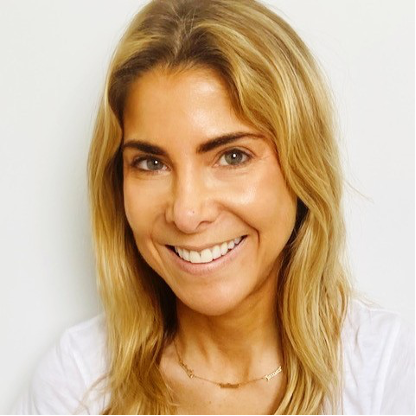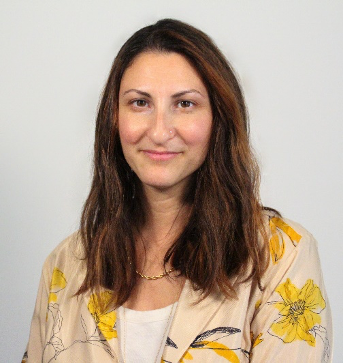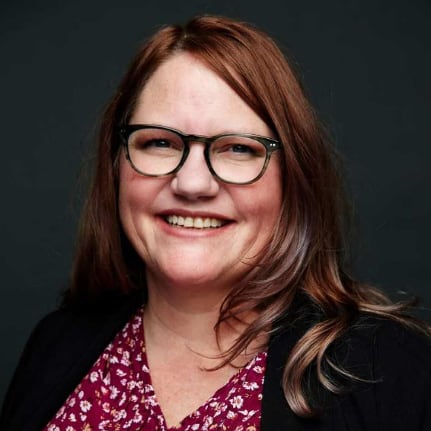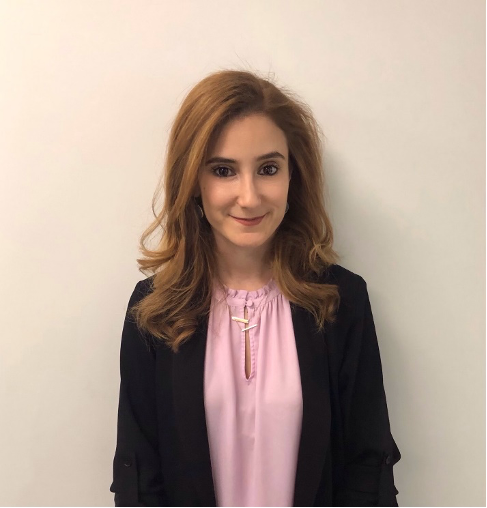Celebrating Women’s History Month with the Women of TransPerfect Life Sciences


March is Women’s History Month, and this year we wanted to take a moment to shine a spotlight on some of the hardworking women who make TransPerfect Life Sciences tick.
Women have been historically underrepresented across STEM industries. In fact, according to the US Census, women represented nearly half of the entire US workforce in 2021, but only 27% of STEM workers. This number is actually an improvement from previous years.

Here at TransPerfect Life Sciences, we’re proud of our majority 67% women-led sales workforce. At our core, we believe it is our people who make us as successful as we are, and that’s why we want to close out this year’s Women’s History Month by getting to know some of our women leaders.

Katie Lewis, Regional Director
1. Can you provide a little background on what you do here at TransPerfect Life Sciences?
I am a Regional Director at TransPerfect. I lead a team of incredible professionals across Europe who help life sciences organizations create, translate, and launch global content. At TransPerfect, constantly creating new solutions for our customers is integral to who we are, so a big focus for our team is helping our clients leverage cutting-edge automation technology and machine translation to accelerate cycle timelines.
2. What is your favorite part about working within the life sciences space?
It’s amazing to be a small part of something so important, such as developing a new drug that saves lives. We try to keep our team always focused on the bigger picture—our role is to help our clients get life-saving drugs into the hands of their patients, faster.
The industry is also evolving quite quickly and looking to better engage their customers, leverage new channels to enhance that experience, and deploy technology to drive greater efficiencies. What we do helps achieve those objectives, so it’s been great to be a part of that evolution.
3. In your opinion, what do you think the biggest challenge for women in life sciences is?
Even though women make up the majority of positions in healthcare, the average gender pay gap is over 25% in most countries. Also, women are grossly underrpresented in clinical trials. The good news is, we’re starting to see a push to elect more women on the board and in senior positions in the industry.
I also think a key to driving long-term improvements will be to support women in the education system who are exploring paths in STEM. This can be through mentorship, support from their peers and faculty, and creating a learning environment that is inclusive.

Jess Eker, Vice President
1. Can you provide a little background on what you do here at TransPerfect Life Sciences?
I oversee a portion of our life sciences team, focusing on bringing in new business, maintaining and growing our existing book of business, helping shape strategy for the wider team through weekly scrimmages and trainings, and figuring out how to best leverage our innovations to maintain our position as industry leader.
2. What is your favorite part about working within the life sciences space?
I enjoy working alongside the incredible leaders we have to figure out new opportunities, given the dynamic and incredibly exciting life sciences and digital health industries. This combines with the fact that we seem to have a limitless toolbox that we can position to clients, given all that we have evolved to offer over the last 30 years (digital support, patient recruitment strategies to heighten engagement, etc.), which translates into helping our clients save lives.
3. In your opinion, what do you think the biggest challenge for women in life sciences is?
I think it’s still the gender gap—women still only make up 28% of the life sciences workforce, so we need to try to make sure we’re increasing opportunities for women (and also girls in STEM) so we narrow the gender pay gap and ensure a more diverse workforce. This is especially interesting, as someone working in life sciences typically earns two-thirds more than those employed in other fields (and some of these higher-earning occupations in turn have the lowest percentages of women workers). It is all the more empowering and rewarding to be part of TransPerfect’s sponsorship and support of Girls Who Code. I am incredibly proud to be part of an organization that is so actively committed to being a positive force of change.

Rebecca Weatherholtz, Director
1. Can you provide a little background on what you do here at TransPerfect Life Sciences?
I am the Director of the Linguistic Validation team in Production. My team focuses on a specific material type called COAs (Clinical Outcomes Assessments), which in layman’s terms are patient and clinician questionnaires. These questionnaires collect data and must therefore undergo a rigorous validation process for use in clinical trials, which my team specializes in.
2. What is your favorite part about working within the life sciences space?
I am particularly challenged and inspired by the data-driven piece of my material type. Ensuring that data reported by patients, caregivers and clinicians are accurate and comparable across studies is a very detail-oriented and quality-driven process. Our team is incredibly quality-focused while still driving major innovations in technology and efficiencies. This is what I enjoy the most about working in the life sciences space!
3. In your opinion, what do you think the biggest challenge for women in life sciences is?
I think the pressure of being a working mother is the most challenging part of being a woman in life sciences. The stakes can feel very overwhelming when the success of your client’s clinical trial is at stake and you need to be at your best to make the right decisions. It is difficult to always be at your best when dealing with sick kids at home, or worse, a global pandemic with school closures. I certainly lean on my team to support me and make sure all bases are covered when I can’t be there 100%. I wouldn’t be able to do what I do without the strong leaders I have to rely on.

Christine Morris, Executive Director
1. Can you provide a little background on what you do here at TransPerfect Life Sciences?
I am an Executive Director in the Trial Interactive division of TransPerfect. I’ve been here for five years, and in clinical research for over 25 years now at various CROs, Sponsors, and Academic Institutions.
As to what I do here, I am a sales-y, creative-type who loves to configure and showcase our amazing software in unexpected ways to solve complex business problems. I specialize in our entire suite of tools, and love learning and growing my knowledge base, as well as teaching others.
2. What is your favorite part about working within the life sciences space?
I love our clients’ energy and making a difference in real people’s lives by enabling our partners in their clinical research and commercialization journeys. All solutions that we provide are critical to our customers’ achieving their goals—putting life-saving therapies into patients’ hands.
3. In your opinion, what do you think the biggest challenge for women in life sciences is?
I’ve been very fortunate in my career to have had interesting and challenging opportunities to take advantage of. While there was lots of hard work and proving myself along the way, I realize that my experience is not universal. In my experience, whether in STEM fields or otherwise, lack of confidence in oneself can be a limiting factor.

Alexandra Sinick, Vice President
1. Can you provide a little background on what you do here at TransPerfect Life Sciences?
I am a Vice President in production, and my team handles life sciences content for everything from Clinical Outcome Assessments to Healthcare Marketing. I started here almost 15 years ago as an entry level Project Coordinator in our New York office, and since then have been a part of building a group of departments that is 250 people strong and operates out of multiple countries. My job is to develop leaders who can find innovative and strategic ways to be impactful business partners to our clients. I strive to build teams that aren’t just translation vendors, but can help our clients solve problems through their expertise, industry knowledge, passion and resourcefulness.
2. What is your favorite part about working within the life sciences space?
Through our work, we are able to provide crucial health and safety information to patients in their native languages at times when they need it most. We are able to assist our clients with reporting cutting-edge research, the results of which are used to provide life-saving healthcare. We play a crucial role in translating materials used to help treat, vaccinate, and spread awareness of COVID-19 during the height of the pandemic. Although I am often dealing with large project scopes, at the end of the day, my work is helping real people.
3. In your opinion, what do you think the biggest challenge for women in life sciences is?
Most industries in the global marketplace are still male-dominated, and life sciences is no exception. Women in the industry need to support each other in all areas of the field, from those running clinical trials to those, like us, providing language services. Not only will the sector benefit from a more egalitarian workforce, but from advocacy to prioritize scientific research for health concerns that affect women uniquely, and have historically been given less attention. I take great pride in being a working woman and mother, and doing what I can to help empower others to have the profound opportunities TransPerfect has created for me.
Thank you to Katie, Jess, Rebecca, Christine, and Alexandra for your responses, as well as to all of the women and allies here at TransPerfect. We are incredibly grateful for all that you do to support our clients’ visions and our company’s values, and we are continuously inspired by your dedication to empowering the next generation of women leaders in life sciences.
For more information on TransPerfect’s commitment to promoting and celebrating women in STEM, please contact us



